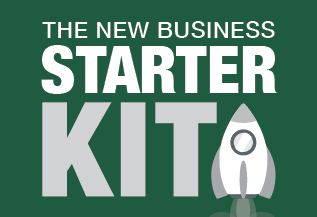2016 Budget Review
Treasurer Scott Morrison handed down the federal budget on 3rd May and with it major changes for small businesses and superannuation.
Small Business Changes
Increasing the small business entity (‘SBE’) turnover threshold
From 1 July 2016 the government will increase the SBE turnover threshold from $2 million to $10 million. The increased $10 million turnover threshold will allow an additional 90,000 to 100,000 business entities to gain access to certain small business concessions, such as the following:
- The lower (27.5%) small business corporate tax rate
- simplified depreciation rules, including immediate tax deductibility for asset purchases costing less than $20,000 until 30 June 2017
- simplified trading stock rules, giving them the option to avoid end of year stocktake if the value of their stock has changed by less than $5,000;
- the option to account for GST on a cash basis and pay GST instalments as calculated by the ATO;
These threshold changes will not affect eligibility for the small business capital gains tax concessions, which will remain available for businesses with annual turnover of less than $2 million or that satisfy the maximum net asset value test.
Reducing the company tax rate over 10 years
The government will reduce the company tax rate to 25% over 10 years (i.e., by 1 July 2026).
This measure will commence from 1 July 2016, whereby the government will cut the small business company tax rate to 27.5%, and make this tax rate available to small companies with an annual aggregated turnover of less than $10 million.
This turnover threshold will then be progressively increased to ultimately have all companies eligible for the 27.5% tax rate in 2023/24. The progressive increase in the annual aggregated turnover thresholds
Franking credits will be distributed in line with the rate of tax paid by the company.
Increasing the Small Business Income Tax Offset (‘SBITO’)
From 1 July 2016, the government will increase the current 5% tax discount (referred to as the SBITO) to 8%. The discount is currently available to an individual in receipt of income from an unincorporated small business entity (‘SBE’) (i.e., basically, an entity with an aggregated turnover of less than $2 million), and applies to the income tax payable on the business income received from such an entity.
The current tax discount (or SBITO) cap of $1,000 per individual for each income year will be retained.
Furthermore, access to the discount will be extended to individual taxpayers with business income from an unincorporated business that has an aggregated annual turnover of less than $5 million.
Applying GST to low value goods imported by consumers
From 1 July 2017, GST will be extended to low value goods imported by consumers. The intent of this measure is to ensure that low value goods imported by consumers face the same tax regime as goods sourced domestically.
Overseas suppliers that have an Australian turnover of $75,000 or more will be required to register for, collect and remit GST for low value goods supplied to consumers in Australia, using a vendor registration model.
This change requires the unanimous agreement of the States and Territories.Superannuation Changes
From 1 July 2017:
Lowering of the annual non-concessional contributions cap
From 1 July 2017, the Government will lower the annual non–concessional contributions cap to $100,000 and will introduce a new constraint such that individuals with a balance of $1.6 million or more will no longer be eligible to make non–concessional contributions. As is currently the case, individuals under age 65 will be eligible to bring forward up to 3 years of non–concessional contributions.
This is in place of the $500,000 lifetime non–concessional contributions cap announced in the 2016–17 Budget.
Catch-up concessional superannuation contributions
From 1 July 2017* the Government will allow unused concessional contribution caps to be carried forward on a rolling basis for up to five years for those with account balances of $500,000 or less.
Only unused amounts accrued from 1 July 2017 can be carried forward, and can only be carried forward on a rolling basis for a period of five consecutive years.
*The start date for this measure has been puched back to 1 July 2018.
Taxing Earnings on assets supporting a Transition to Retirement Income Stream
From 1 July 2017 the Government will remove the tax exempt status of earnings supporting the TRIS. Earnings from Assets supporting a TRIS will be taxed at 15%. Importantly, this change will apply irrespective of when a TRIS commenced. In addition you will no longer be able to elect to treat withdrawals from a TRIS as a lump sum.
$1.6 million superannuation transfer balance cap
From 1 July 2017, the government will introduce a $1.6 million ‘superannuation transfer balance cap’ on the total amount of accumulated superannuation an individual can transfer into pension phase. Subsequent earnings on this pension balance will not be restricted.
By way of background, under current law, if a fund member moves from accumulation phase into ‘pension phase’, earnings on assets supporting the pension (income tax and capital gains) are tax free in the fund. Furthermore, there is no limit on the amount of accumulated superannuation that an individual can transfer into pension phase.
Under the proposed changes, if an individual accumulates amounts in excess of $1.6 million, they will be able to maintain this excess amount in an accumulation phase account (where earnings will be taxed at the concessional rate of 15%).
Importantly, fund members already in pension phase with balances above $1.6 million will be required to reduce this balance to $1.6 million by 1 July 2017 (e.g., it seems such action may include the withdrawal of funds from the superannuation environment, or return a portion of the balance held in pension to accumulation phase via a partial commutation).
It is proposed that, if the $1.6 million cap is exceeded, the excess amount plus earnings on the excess will be subject to a tax. It is not currently clear as to whether individuals will have the option to withdraw the excess to avoid this penalty tax (i.e., similar to the tax treatment currently afforded excess non concessional contributions).
Reducing the concessional contributions cap to $25,000.
From 1 July 2017, the government will lower the annual cap on concessional superannuation contributions to $25,000. Until this time, the existing concessional contributions caps, being $30,000 for those aged under 50, and $35,000 for those aged 50 years and over, will apply.
Tax deduction for personal superannuation contributions
From 1 July 2017, the government will change the law to allow all individuals under age 75 to claim an income tax deduction for personal superannuation contributions. Individuals who are, for example, partially self-employed and partially wage and salary earners, and individuals whose employers do not offer salary sacrifice arrangements will benefit from the proposed changes.
Individuals aged between 65-74 will still need to pass the work test.
Changes to the ‘high income contribution rules’
From 1 July 2017 individuals with combined incomes and superannuation contributions greater than $250,000 will pay 30% tax on their concessional contributions, up from 15 per cent. Under current law this only applied to individuals with combine income and superannuation contributions greater than $300,000.
Improve the superannuation balances of low income spouses
From 1 July 2017, the government will increase access to the low income spouse superannuation tax offset by raising the income threshold for the low income spouse to $37,000 (from $10,800). The offset is gradually reduced for income above this level and completely phases out at income above $40,000.
The low income spouse tax offset provides up to $540 per annum for the contributing spouse.







